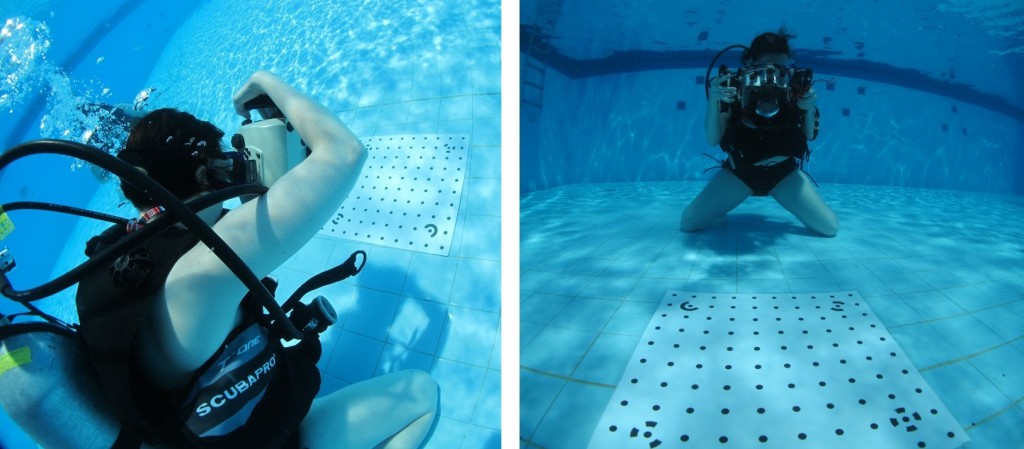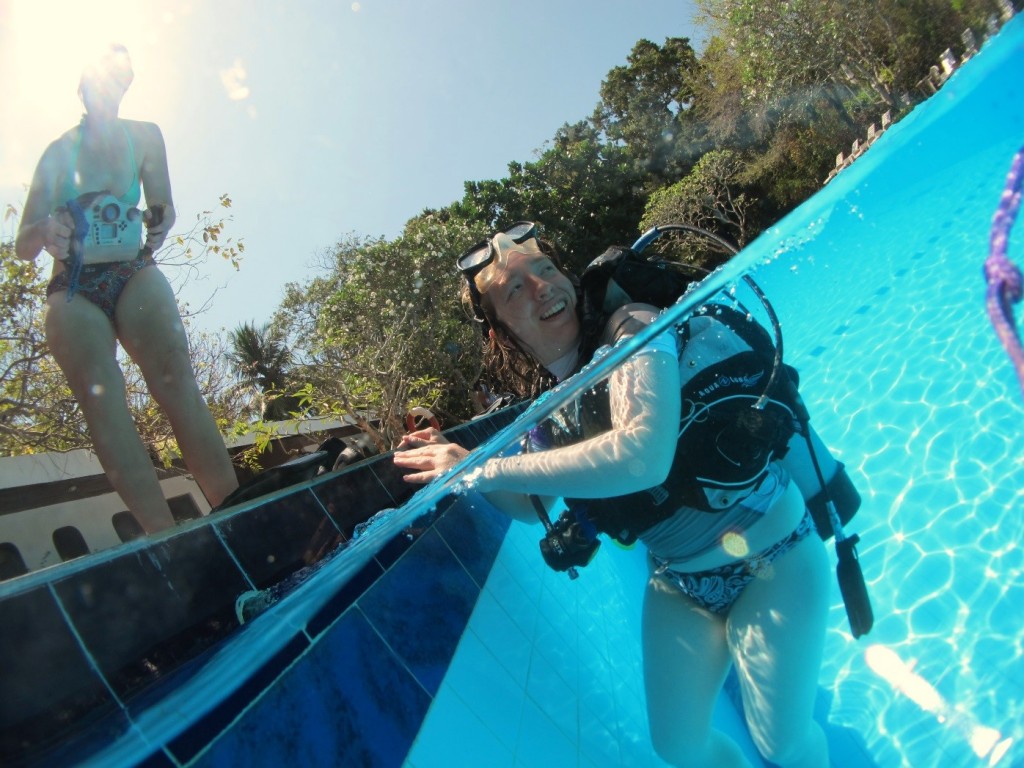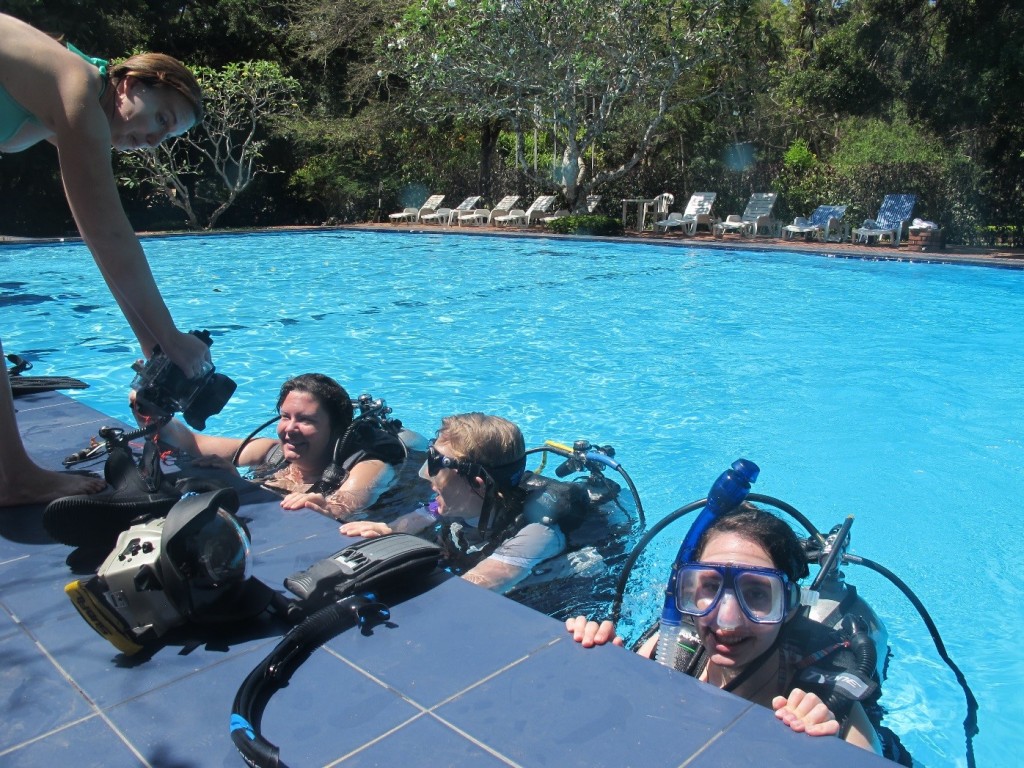Author: Laura White
We woke up this morning to another fantastic day in Sri Lanka, one with beautiful blue skies and cool breezes. Taking advantage of the day, we decided to make our way to the pool at the lovely Peacock Hotel in Hambantota for in-water drills. We knew of the Peacock Hotel from our (rather rowdy!) New Year’s Beauty Pageant last year (//2013/01/01/will-a-new-year-bring-a-new-beginning/) and we were excited to explore a bit more!
Several members of our team were working with brand new scuba regulators or buoyancy compensators and wanted to complete a test dive in order to work out minor kinks. Even more importantly, we needed to dry dive our underwater camera housings and calibrate all of our cameras for use in the photogrammetric mapping of our site.
A far cry from the murky, high-current waters on our site, the pool was an ideal location for practice. Indeed, it proved to be immensely beneficial: Arianna discovered a small configuration issue with her regulator which, when corrected, made it much more comfortable to use, Staci found that she needed to make adjustments to keep from losing her fins during hard swims, and Megan broke in a brand new BCD that she purchased only a few days before the campaign.
All of us got accustomed to wearing the heavy, high-volume steel tanks that we will be using on site. These tanks were purchased this year to correct one of our biggest difficulties from last year, the fact that, remarkably, the only scuba tanks we could find on the entire island held only 80 cubic feet of air! These larger volume tanks will give us the air needed to complete longer dives, accomplishing more on the wreck site.
We spent most of our time at the pool calibrating cameras for photogrammetric mapping. Photogrammetry is a mapping technique that uses the relationship of artifacts on site to various artificial fixed points placed nearby, thereby determining the exact location of the artifacts in space. It uses a computer program that can calculate the spatial relationship much more easily than a person could by hand.

Arianna takes photos of the calibration card to prepare cameras for photogrammetry. Photo by Laura White.
Photogrammetry has become a leading mapping technique for archaeologists because it is rapid, accurate, and effective, but it also requires careful calibration of cameras and some time to set up on site. Furthermore, it requires good visibility to be accurate. The pool provided a stable, high-visibility environment in which we were able to test all of our cameras and calibrate them, saving valuable dive time at sea by finishing the task well ahead of time.

Karen, finished with one camera, passes it up to Staci to break down and pack away. We are all pleased with a job well done! Photo by Laura White.
The morning in the sun was most definitely well spent, we all came away sunburned, but happy, and excited to be one step closer to completing successful archaeological dives.



